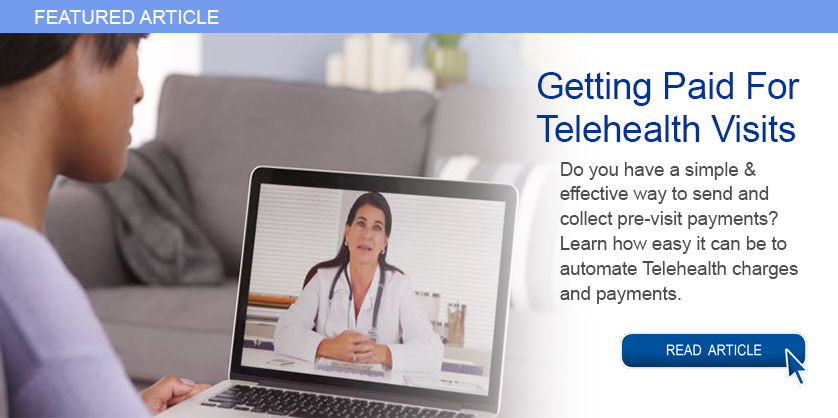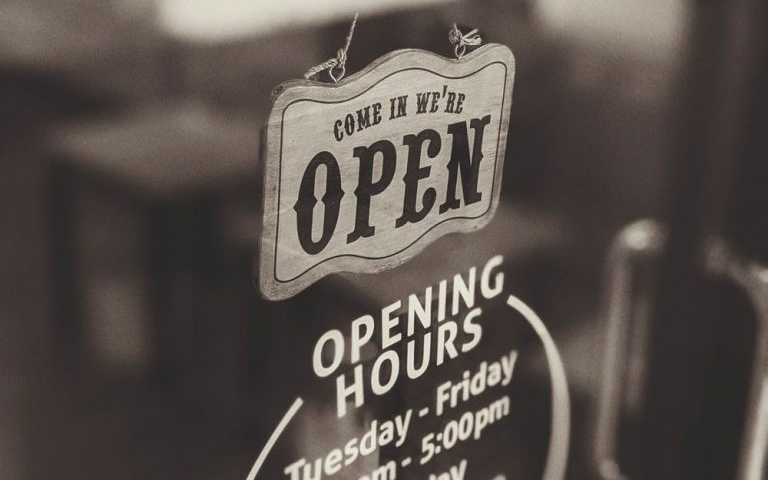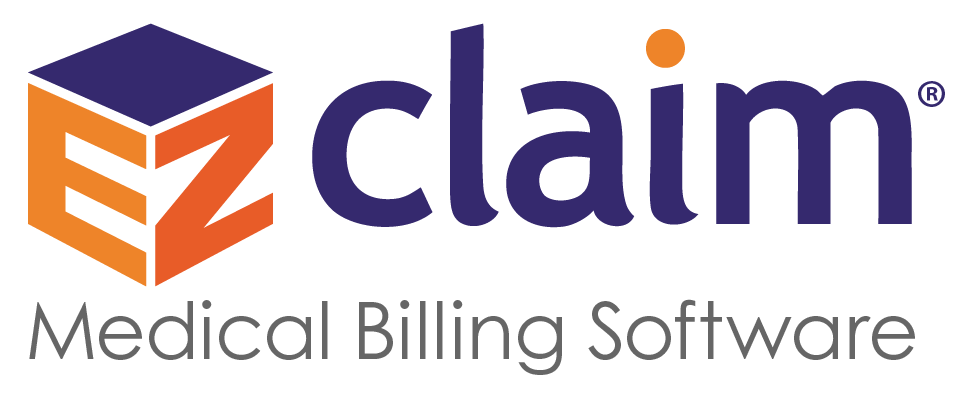
May 12, 2020 | Electronic Billing, EZClaim Premier, Features
A recent medical billing webinar on Telehealth that EZclaim hosted is now available to review.
On April 30th, EZClaim hosted a Telehealth Updates Webinar for our clients with guest speaker Sandy Giangreco Brown – Director of Coding and Revenue Integrity Health Care at CliftonLarsonAllen, LLP
We had one of the largest viewing audiences 101 active attendees in the session. Sandy shared informative billing codes and direct links to update hands-on information for billers actively coding Telehealth sessions. For those of you who missed it, we have provided on our website the recorded session ezclaim.com/webinars and can provide the presentation slides too! Just send a request to sales@ezclaim.com
We continue to get views of this presentation and look forward to hosting more hot topics with the CLA Team.
With the onset of COVID-19 came a great opportunity for clinics and hospitals to offer Telehealth and Communication Technology Based (CTSB) services. The Centers of Medicare and Medicaid Services, or CMS, have provided many updates to the available services that can be provided and billed to the patients to help practices not only stay afloat financially but also and most importantly, to keep their staff safe and provide excellent care to their patients!
There were new guidelines released even after this webinar on 4/30/2020 (which can be found here – https://www.cms.gov/files/document/se20016.pdf, and now includes audio-only Telehealth for services such as psychotherapy, tobacco cessation and medical nutrition counseling as well as diabetes self-management training. CMS is also increasing the payments for the Audio Only services from $14-$41 nationally to $46-$110.
As of April 30, 2020, in order to bill Telehealth, RHCs are now required to bill the G2025–CG–95 from January 27, 2020, to June 30, 2020. Then from July 1, 2020, to the end of the PHE, they will be billing the G2025 with an optional 95 modifier, per CMS SE20016 Medicare Learning Network Transmittal.
FQHCs will need to report three (3) codes for their Telehealth Services:
- G0467 (or other appropriate FQHC specific payment code)
- 99214–95 (or other FQHC PPS Qualifying Payment Code)
- G2025–95
CLA is on the frontlines and closely monitoring and analyzing activities related to Telehealth and other virtual health regulations
CMS Telehealth fact sheet, Frequently Ask Questions:
As your practice adjusts to Telehealth going forward, EZclaim’s medical billing solution can help you simplify patient billing and help you get paid for Telehealth visits. (Our recent medical billing webinar on Telehealth may just help you better understand the current situation).
So, to help you investigate how EZclaim’s medical billing solution may work for you, either schedule a one-on-one consultation with our sales team or download a FREE TRIAL to check out the software yourself. For additional information right now, contact EZclaim’s sales team at 877.650.0904 or send an e-mail to sales@ezclaim.com.
[Contributed by Sandy Giangreco Brown – Director of Coding and Revenue Integrity Health Care, CliftonLarsenAllen LLP]

May 12, 2020 | BillFlash, Features, Medical Billing Software Blog
Telemedicine was already growing in popularity prior to the onset of the Coronavirus pandemic. So, as the adoption rate increases, EZClaim clients may have questions about sending telemedicine charges and getting paid for Telehealth visits.
Telehealth challenges can range from issues with technology to getting paid. With Telehealth becoming the norm for many doctor-patient visits, it is important to have a thoughtful approach in place regarding collecting patient payments. To stay in business, you have to get paid for the work you are doing. So, establishing a process for Telehealth consultations is vital to your business, and it should be a top priority to build a successful program from beginning to end.
The answers to the following questions will help set the baseline for how to collect patient payments for
Telehealth visits:
- What is my process for charging for copays?
- How and when do I collect outstanding balances?
For example, if you collect payment before an in-person visit, you should collect payment before a Telehealth visit, too. There is no need to re-create your process completely. Just change what is needed to match your current in-office routine.
Sending Charges Before a Telehealth Visit
A simple way to send pre-visit charges to patients is to provide them with a link that takes them directly to the payment site. EZClaim’s medical billing solution is integrated with BillFlash LinkPay, which enables customers to provide payment for the upcoming visit. So, before the Telehealth session begins, the practice simply sends a link to their patient via an e-mail or text, making the appointment confirmation and the payment processing part of the check-in process. After the payment transaction is complete, it will immediately show up on the practice’s BillFlash report. LinkPay is designed to be easy to use and doesn’t require patients to remember a login or a chart number.
Here’s how EZClaim enables the process through BillFlash:
- Prior to Telehealth visit, the patient is sent a link to pay through LinkPay, and another link to join the Telehealth call
- The patient pays the required amount through LinkPay, which is immediately confirmed and processed
- The patient joins the Telehealth session
- Results and follow-up are completed electronically
- Insurance billing is completed
- The patient receives a paper statement or eBill notification for any remaining balance
- The patient is directed to pay the remaining balance online at MyProviderLink.com
Automate What Can Be Automated
With so many changes taking place in healthcare, a great way to help protect the financial stability of your practice is to automate what can be automated. This saves your staff time and decreases your cost of doing business.
One way to do this is to set up automatic payment plans for patients, particularly for those who have been hit hard by the economic impact of COVID-19. A payment plan is a good way of keeping the revenue flowing in, and it shows your patients that you are compassionate and willing to help them through these unprecedented times.
BillFlash also securely stores payment information, so patients will not need to re-enter their information every time they pay a new bill.
As you continue to adjust to Telehealth going forward, BillFlash can simplify patient billing and payments significantly and help getting paid for Telehealth visits.
So, for a LIMITED TIME (during May 2020), EZClaim customers can try BillFlash statement and eBill services for FREE for 30 days. Click on this link for more details about BillFlash or try it out for the next month.
For additional information, call BillFlash at 435-940-9123, or contact EZclaim’s support team at 877.650.0904 or support@ezclaim.com.
[Contributed by James Easley VP, Marketing NexTrust Inc.]

Apr 13, 2020 | Medical Billing Software Blog, Trizetto Partner Solutions
On January 13th we posted part one on this topic of Eligibility in healthcare, in that, we touched on deductibles, co-pay, and max out-of-pocket pay. Now in part two, we review the impact of price transparency in healthcare and its importance to the healthcare team decisions.
Consumers are the most important member of the healthcare team and are better collaborators in their care when they know all the variables and their required responsibilities in the process.
The individual consumer’s healthcare team includes, along with themselves, the physician and their staff, the pharmacist, an insurance adviser, and possibly some gatekeepers as well. The communication of clear symptoms when a patient is diagnosed is the responsibility of that team along with building an understanding of the financial responsibility that goes with any medical solution. While providing answers, options and solutions is a provider’s responsibility, so is providing a cost for the provided care. Therefore, price transparency can be achieved when the cost for that care is presented in a clear and concise fashion so the patient can understand what they owe, why they owe it, and when it is due.
Ensuring your staff is educated on discussing the financial responsibility with the patient from the first appointment and forward will strengthen the healthcare partnership and assist in the collection process. Understanding the steps that occur post the upfront estimate can be beneficial to the team. This discussion can be bolstered by ensuring bills are clearly marked with the statement, “this is a bill”, also clearly listing what the patient is being charged for when the bill is due and offering details on the methods of payment that are accepted. This clarifies what insurance will cover for the patient and their own out-of-pocket cost, prompting them to share any concerns and constraints with payments upfront.
Estimating patient responsibility is one part of the reimbursement process that is used for transparency for patient billing. The estimates can be provided using a spreadsheet of prior reimbursement and your most commonly billed CPT codes. If you would like an automated and more accurate option then look into a software tool like the Patient Responsibility Estimator by our solutions partner, TriZetto Provider Solutions (TPS). Giving this to the patient at the time of checking in will assure they have a rough idea of the costs and allow the office to collect upfront if needed.
For more information on how EZClaim can help you with this journey, schedule time with our sales team. Ready to get started? Download your FREE 30-day Trial today!
[ Contribution by Brenda Smelser with the DMC ]

Apr 13, 2020 | BillFlash, Partner
Medical billing managing collections during COVID-19 will be different than it was in the past. It has already changed a lot about how medical practices operate, and in a short amount of time. One thing that hasn’t changed, however, is that practices need to get paid in order to continue operating. This includes sending patients to collections when necessary.
Managing late or unpaid bills during economic uncertainty may require a different approach than you’re used to. Before you send patients to collections, make sure you take these steps first.
- Be upfront about payment expectations from the beginning
-
- You should already have a strategy in place regarding informing patients how much they owe for services. Stick to it. Many people are hoping for leeway on certain bills due to the economic impact of COVID-19, but gently remind your patients that for essential healthcare services to continue, practices need to keep revenue flowing, and that means billing will continue as usual.
- Set up payment plans
-
- If a patient is unable to pay a bill in full, help them set up a payment plan. BillFlash PlanPay lets you set up scheduled, automatic payments to be paid over a set period of time. This is the best option for both you and the patient because:
- The patient has a more manageable bill
- Your practice is more likely to be paid in full
- Setting up a payment plan shows your patients you’re willing to work with them. That’s usually all they need to be assured that you care.
- Send out multiple reminders
-
- Use whatever resources you have—email, phone, text, mail—to contact patients about balances they owe. Be courteous in your reminders, but firm. Most patients want to pay their medical bills. Often all they need is a simple reminder and an easy way to make the payment.
- BillFlash helps you manage all of this during the pre-collections phase to help ensure you are paid as quickly and completely as possible.
If none of these steps work, then it’s time to get collections involved.
What to Include in a Collections Letter
Include all the facts of the visit. This includes:
-
- Date of service
- Service provided
- Amount patient owes
- Payment options
Tone of the Letter
The right tone in your letter can do more to ensure payment and a continued relationship with the patient than anything else you include. You need to convey a sense of urgency, but without being overbearing and intimidating.
A few tips to keep in mind:
-
- Empathize with the patient. Simply saying “We understand you may be experiencing financial difficulties at this time” is more likely to get a response than a curt “final warning” threat.
- Explain why it is important for the patient to pay anyway. Example: Like any other business, our practice relies on revenue to thrive. In order to continue to provide these valuable healthcare services, patients need to pay their bills in full and on time.
- Offer a payment plan. Give patients one more opportunity to pay their bills in smaller chunks over a period of time to avoid having their accounts sent to collections.
We’re all experiencing difficulties during this global pandemic. The only way to get through it is to work together. Being upfront with patients about payment expectations and being willing to work with patients who have fallen on hard times will help all of us through this global health crisis.
BillFlash Collections Services can help you in managing collections during COVID-19, and simplify and streamline all your other collection processes for you, saving you the headache of exporting, importing, and working with a disconnected agency.
As an EZclaim ‘preferred’ partner, BillFlash is fully integrated with the EZclaim Premier billing application. For more details, view this informational video: https://www.rcm.billflash.com/ezclaim For more information about the EZclaim billing solution, view our website: https://ezclaim.com/

Mar 10, 2020 | BillFlash, Partner
This article about new patient billing methods was written by Angie Carter with NexTrust.
Communication is easier than it’s ever been, but a lot of practices aren’t taking full advantage of two of today’s most effective mediums of communication: email and texting. Patients, like all other consumers, spend a lot of time on their phones; it’s where they keep in touch with friends and family, as well as businesses they work with regularly.
Most practices rely heavily on phone calls to contact their patients about appointment reminders, insurance issues, etc. But many adults now prefer to communicate via email or text. Often a quick phone call will do the trick, but email and texting get your foot in the door a lot more often. Furthermore, people are far more likely to respond to a text or email than a voicemail.
Here are a few ways to build your contact list at your practice to improve communication with patients, ensuring greater patient satisfaction and better cash flow.
- Collect cellphone numbers & email addresses during new patient registration.
Consider making these required fields. Allow the option to fill out more than one email address or mobile number as well, since most households have several. It would also be helpful to quickly explain why you need this information. BillFlash allows you to send out regular statements and eBills through email and text, and you can also quickly update your patients on any last-minute changes happening at your practice.
If you have a newsletter or regularly send out practice updates, make sure patients know about these as well. This is another opportunity to ensure you have the information you need to better communicate with your patients.
- Ask for an email address & cellphone number any time you confirm an appointment.
Even if your current patients have already given you this information, use appointment confirmations as an opportunity to verify the information you have on file is current. Email addresses change all the time, so it’s crucial to ensure they’re up to date so you know your messages are being received. And for patients who haven’t yet provided this information, this is a good time to tout the benefits of being digitally connected.
- Encourage mail-only patients to go paperless.
A huge barrier to patients paying their bills on time—or at all—is that it’s often not as simple to pay a medical bill as it is to pay, say, a utility bill. BillFlash simplifies this process tremendously, both for the patients and your practice. By providing an email address and cellphone number, patients can more easily stay current on their medical bills and procedures.
- Ask patients to provide feedback on your website.
Give your patients a space to express their thoughts at their convenience. Include a form on your website for patients to fill out—which would include their email address and phone number—and add the info they provide to your database. You could also post signs throughout your office encouraging patients to visit your website to provide feedback about the care they received that day.
- Add cellphone number/email to check-in sheet.
Most practices require patients to sign in whenever they come in for an appointment. Consider adding a column or two that asks for their email and cellphone number. At the top of the column, you could include a note that says something like “Want to receive appointment reminders via text or email?” to reiterate the benefits patients will receive by providing this information.
- Offer patients an incentive to provide their email address & cellphone number.
People love free stuff—that’s a given. Try running a fishbowl incentive every few months. All patients would need to do is drop their email address and/or cellphone number into a bowl and they’ll be entered into a drawing to win a prize. And why reward just the patients? Incentivize your office staff to collect this information as well.
Everyone has a cellphone number and email address, but it does take some effort to collect them. But it’s an effort that rewards you many times over, as this makes it easier to keep patients in the loop and ensure you get paid. BillFlash makes it easy to automate patient billing and payments—including sending reminders via email or text—to improve the financial health of your practice.
BillFlash is integrated into the EZclaim billing application. Click here to view a video that discusses the details.
For more information about new patient billing methods and sending electronic bill notifications through text and email, contact EZclaim or their statement and payment services partner, BillFlash, at 435-940-9123 or sales@billflash.com






